Animals and Exhibits
Preview all of our exhibits below!
Click the exhibit name to read more about it.
-
African Oasis
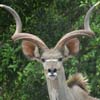
See a trio of endangered gazelles native to the unforgiving and otherworldly dunes of the Sahara Desert. Known as slender-horned gazelles, as few as 250 of these elegant creatures may yet traverse northern Africa’s sand seas west of the Nile River.
-
Africa's Lions

In Lagoon Loop near the cruise, enjoy an up close experience with two South African lions (Panther leo krugeri). Accredited zoos have the responsibility to provide safe havens for purebred animals that represent their relatives in the wild. The genetics of these cats can be directly traced to southern African populations.
-
Alligator Bay

Coconut palms and a host of tropical plants surround the sun sparkled waters of Alligator Bay. Look more closely and you'll see giant reptiles gliding through the waters or sunning on the banks and islands. You'll learn the truths behind the myths about the more than one million alligators that make their homes in Florida. This natural lake environment is also home to numerous native species including an annual rookery of herons.
-
Backyard Habitat
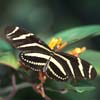
While native wildlife use all parts of Naples Zoo as a haven, the Zoo also set aside a portion of the grounds to create a Backyard Wildlife Habitat™ and had it certified by the National Wildlife Federation (NWF). The site has all four elements required by certified sites including food, water, cover, and places to raise young. By having their favorite food plants, the habitat is a popular spot to find wild butterflies flitting between flowers. Naples Zoo is also a member of the Butterfly Conservation Initiative to support their survival.
-
Black Bear Hammock

At the habitat, visitors have the opportunity to learn both basic safety tips if a bear is encountered in the wild as well as how to avoid attracting them to their yard. They will also gain a deeper appreciation of the bears’ crucial role in the local environment. Resources for living with bears.
-
Cheetahs
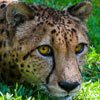
She was born in the Netherlands. After traveling to the United States, she came to Naples to enjoy a tropical retirement. With a limited number of cheetahs in the nation, there were many choices for where she could live. Southwest Florida can be proud the Species Survival Plan® selected our nationally accredited facility for her care. Long known for husbandry expertise with felids, our staff enjoys the opportunity to provide care for this aging cat.
-
Coyotes

In 2011, four coyotes were discovered motherless at a closed historic hotel in Florida. That summer, Naples Zoo was selected as the home for the orphan coyotes. Upon the pups’ arrival, Naples Zoo staff adopted a Plott hound from Humane Society Naples. She served as an assuring maternal figure and taught them social skills. As they matured, she was no longer needed and she moved out and continues to live at the Zoo.
Fosas of Madagascar

The exhibit features themed naturalistic rockwork replicating the striking tsingy limestone formations seen in Madagascar. The tsingy rock surrounds the glass viewing areas for guests to get clear views. As agile as squirrels in a tree, the fosas can jump to natural oak trees and vertical poles, run along an elevated catwalk, play on the ropes, and climb through custom structures.
Giraffe Preview
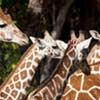
There's nothing quite like watching the world's tallest animal lean down to you and nibble a treat from your hand. Best of all, you can enjoy this experience every day between 10 a.m. and 3 p.m. at Naples Zoo. For just $5, you'll receive a serving of three tasty leaves of romaine lettuce from Wynn's Market. It's an experience you won't forget as you get an incredible close up view of our elegant giraffe. Trained docents answer your questions so you can learn how little giraffes sleep each day and why high blood pressure is a good thing for these gentle giants!
Honey Badgers
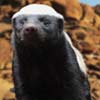
The three badgers arrived in Naples from another nationally accredited zoo. After the standard quarantine time to insure their health and to make habitat renovations, the ratels were ready to greet Zoo guests. And “habitat renovations” is putting it lightly. Heavy tie wires on the mesh walls were replaced with even heavier steel. Feeding dens were completely rebuilt. The ground was excavated and covered in 6-gauge chain link; the chain-link seams were woven together and concreted, as was the entire perimeter of the habitat. Finally, a naturalistic rock wading pool and climbing play structures were crafted before the habitat was refilled with dirt.
Leopard Rock

Get wildly close to leopards! It's a truly thrilling experience. To create the strongest feeling of no separation between you and the leopards, seven-foot-high glass panels are set within a recess of a rock textured concrete pad – no curb or edge to break the illusion. The cats and you can stand nose to nose on the same even surface separated only by just over an inch of clear zoo-grade glass. Living trees, a recreated kopje rock feature, and other features provide natural elements for the leopards to interact with.
Striped Hyenas

These carnivores are rarely seen in the United States. Naples Zoo is home to two of just fifteen in the nation. In the wild, they range across northern and eastern Africa into the Middle East and into Asia.They typically eat carrion as well as fruits, insects, and small mammals.
South American Wonders
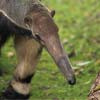
These are just a few words people find themselves saying when they see some of the wondrous animals from South America. Come find out for yourself what words you come up with when you see visually striking monkeys that live in a small range in the forests of Colombia or colorful tortoises that eat meat – or the creature that perhaps captures the imagination the most, the knuckle-walking, sharp-clawed, long-faced giant anteater of the South American grasslands.
Tiger Forest

The nation's rarest tigers can be seen at Naples Zoo. All tigers are among the most endangered creatures sharing our planet and in North America the rarest of tigers are the Malayan tiger with only about 60 cats in the country Learn more about how you can help tigers when you're at the grocery store and with the coffee you drink.